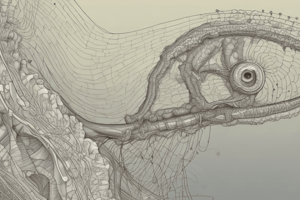Podcast
Questions and Answers
What is the primary form of reproduction for single-celled organisms such as archaea and bacteria?
What is the primary form of reproduction for single-celled organisms such as archaea and bacteria?
- Parthenogenesis
- Sexual reproduction
- Asexual reproduction (correct)
- Budding
In asexual reproduction, the offspring inherit the full set of genes from:
In asexual reproduction, the offspring inherit the full set of genes from:
- Their siblings
- Both parents
- Their single parent (correct)
- Random sources
What is the most common form of asexual reproduction in vertebrates?
What is the most common form of asexual reproduction in vertebrates?
- Fragmentation
- Budding
- Parthenogenesis (correct)
- Binary fission
Which organisms can also reproduce asexually?
Which organisms can also reproduce asexually?
What is the type of reproduction that does not involve the fusion of gametes or change in the number of chromosomes?
What is the type of reproduction that does not involve the fusion of gametes or change in the number of chromosomes?
Flashcards are hidden until you start studying
Study Notes
Asexual Reproduction
- The primary form of reproduction for single-celled organisms such as archaea and bacteria is asexual reproduction.
- In asexual reproduction, the offspring inherit the full set of genes from a single parent.
- The most common form of asexual reproduction in vertebrates is budding, where a new individual grows from a part of the parent's body.
- Organisms such as yeast, fungi, and some invertebrates can also reproduce asexually.
- Asexual reproduction is a type of reproduction that does not involve the fusion of gametes or change in the number of chromosomes.
Studying That Suits You
Use AI to generate personalized quizzes and flashcards to suit your learning preferences.




